introduction
This article refers to the address: http://
This paper presents a complete ZigBee®-based driver assistance system solution that leverages the ZigBee protocol with features such as low cost, low power consumption, and secure wireless network capabilities.
The program will alert and inform the driver when the driver is driving close to a preset road point on the road. A ZigBee-based device is installed at each road point, and related information is broadcasted to the approaching vehicle of the built-in ZigBee device. This system greatly reduces the dependence on human vision and road lighting conditions.
ZigBee network
The ZigBee network protocol stack is built on the IEEE 802.15.4 standard that defines the physical layer (PHY) and medium access control layer (MAC) for low data rate, low power networks. ZigBee adds network (NWK) and application layer (APL) specifications on top of 802.15.4 to form the complete ZigBee protocol stack.
For more information on the ZigBee network, refer to Beyond Bits Issue 4, ZigBee/IEEE 802.15.4-based location monitoring.
The solution's network has the following types of ZigBee nodes:
â— Gateway node: This node is located in the traffic control station or police station and is used to synchronize and collect information about nearby waypoint nodes. Each gateway node will connect to the Internet via Ethernet. Therefore, the Internet will connect to each gateway node as a hub network. Traffic data record applications, or any application that falls within the scope of urban management authority and requires extensive coverage, requires a network of waypoint nodes. This facilitates the collection and analysis of central data, as well as the updating and maintenance of remote nodes.
â— Waypoint nodes: There are two types of waypoint nodes: network nodes and independent nodes. The network node performs heavy data logging operations and is permanently connected to a gateway node. Such nodes can be placed on main roads, highway entrances and exits and major intersections. In addition to acquiring and transmitting traffic information, these nodes can also broadcast useful driving information to in-vehicle nodes, such as nearby gas stations or hospitals.
These waypoint nodes should be able to handle traffic in either direction of the road. Therefore, each in-vehicle node needs to inform the waypoint node of its direction of travel, and the waypoint node will feed back relevant information. Because these nodes and gateway nodes make up the network, they get the most up-to-date landmark and utility information in their neighborhood.
â— Standalone nodes are used for temporary deployment and are not necessarily connected to gateway nodes in the region. They can be used as emergency notifications to warn of traffic accidents ahead of the road, construction in progress and Other road hazards. Once the danger is resolved, these nodes will be removed. Standalone nodes can also act as advertisements, which do not require a connection to a city-managed waypoint network.
â— Vehicle nodes: These nodes are placed in each vehicle to communicate with the waypoint nodes. These nodes have a personal computer interface, such as a keyboard, LED or LCD screen, to facilitate the user to use the system.
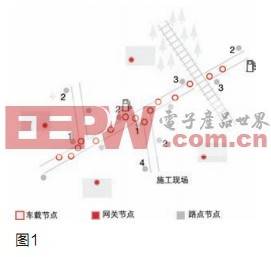
As shown in Figure 1, the waypoint nodes labeled 1–4 will effectively perform the following functions:
1. Provide traffic warnings about potential blind spots;
2. Provide a variety of landmark information. Such as gas stations, shopping malls and hospitals;
3. Provide information on trains that are close to railroad crossings;
4. Temporarily provide a warning about construction and other traffic obstacles.
In the next chapter, we will see that all nodes work together and can support multiple applications simultaneously.
Setting
Each ZigBee car node has a unique ID assigned to it, just like the license plate number of the car.
The in-vehicle node sends a "ping" packet containing the ID at periodic intervals. Once the "ping" packet is received, the waypoint node will send back a specific message data.
application
In a broad sense, applications can be divided into the following three categories.
Traffic warning
Traffic alerts will use information to alert drivers to dangerous conditions on the road ahead. The waypoint node can detect the approaching vehicle and transmit a warning message to indicate the impending dangerous situation, such as:
◠Speed ​​limit and limit line caused by uneven road surface; blind spot for turning; road maintenance; no stop, no entry or change of speed limit, such as school district; pedestrian crossing and entrance of hospital or fire station; vehicles entering one-way road, more Appeared in the hilly area.
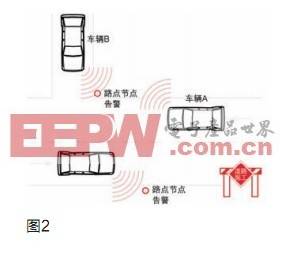
Figure 2 shows how to set up the waypoint node device to give the driver a warning in advance and take corrective action. The warning process for vehicles near blind spots in turn is as follows:
â— In Figure 2, the waypoint node detects that vehicle A is approaching the intersection (received ping packet from vehicle A).
â— The waypoint node then records the ID of vehicle A and issues a warning message for “turning blind spotâ€.
◠After receiving the warning message, the vehicle node of vehicle A will simultaneously send the driver a “turn blind spot†warning message for audio and video.
â— Now, vehicle A is still within the range of the waypoint node, and vehicle B also enters the range of the waypoint node.
â— When the waypoint node detects the vehicle B, it will change its broadcast information to “multiple cars approaching the turning blind spotâ€. Because it is a broadcast message, it will be received by both cars.
â— The car node of the two cars will issue an audio alarm again and turn on a red LED. A warning message will also be displayed on the LCD display of each vehicle.
â— The driver of both cars can slow down or stop as required.
â— When both cars leave the range of the waypoint node, the node stops broadcasting.
For all road condition alarms, the placement of the waypoint nodes must ensure that warning messages are sent to the driver early so that they have enough time to react. The correct placement depends on the following factors:
Factor 1: Broadcast range of the waypoint node or vehicle node (whichever is shorter)
Factor 2: ZigBee data transfer rate between the vehicle node and the waypoint node
Factor 3: Average human reaction time
Factor 4: Speed ​​limit, which helps determine the average distance required to park the car
Let us assume that Vehicle A and Vehicle B are approaching the blind spot at 70 km/h (19.44 m/s) at the same time, which is the speed limit (factor 4). Factor 1 is equal to 50 meters (conservative estimate) and the data transfer rate is 50 Kbps (factor 2). At a speed of 70 km / h, the braking distance is about 43 meters, including the driver's reaction time. For example, the warning message is 800 bits of data.
Then, A and B will be found 50 meters away from the waypoint node, and at a data transmission rate of 50 Kbps, it is only 16 milliseconds to send an 800-bit warning message, and the distance between the vehicles is about 32 cm during this time. Subtracting this number from 50 meters still leaves a braking distance of more than 43 meters.

Information broadcast
These applications provide drivers with everything from non-secure emergency messages to various commercials.
Some examples:
â— Road signs
â— Recently refueling / steaming station
â— Recent hospitals, hotels, markets, car service stations and landmarks
â— Direction guidance, such as destination A is 2 km ahead of the current location, destination B is 3 km to the right of the current location, and destination C is 3 km to the left of the current location
â— Advertising by roadside restaurants
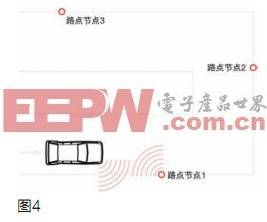
The solution can also track stolen or escape vehicles by following these steps:
â— Once a vehicle has issued a warning message, each gateway node will receive the ZigBee node ID number of the vehicle.
◠The gateway node then passes it and a “red alert†packet to its respective waypoint node.
• The waypoint nodes then enter a special mode that compares the respective recorded vehicle IDs to the "red alert" ID. When the waypoint node finds a match, it will alert the mesh joint.
â— A rough driving route can be recorded, including the time at which each waypoint node identifies the car.
System details
We have introduced the concepts of "dynamic unit" and "static unit" here. The ZigBee unit installed in the car is called a dynamic unit, and the waypoint node on the road is a static unit. On the dynamic unit, the LCD panel of a car dashboard and the LED array are used to display information and alert the driver with an audio warning. The type of LCD screen used (segmented or color) depends on the type of microcontroller and the cost of the device. If you use the MCF1322x in the Platform Level Package (PiP) [1], you can connect to the LCD screen via SPI. LED Design Unit with
It can be applied to the design through general purpose I/O (GPIO) or fast I/O (RGPIO), which can replace the LCD liquid crystal display in a low cost solution. In addition, the waypoint node and the gateway node do not need an LCD screen, because a technician can view the information through the laptop connection node during debugging and maintenance. For all dynamic nodes, audio alerts must be supported.
To save power, the static node is in sleep mode most of the time and wakes up when it finds a car approaching. Solar energy can also be used to provide working power to the waypoint nodes and to charge their batteries with 24 hours of energy efficiency.
Freescale's strengths
Freescale offers all building blocks for developing a complete ZigBee-compatible platform solution, including hardware, software, tools and reference designs. Freescale offers a two-chip hardware solution from advanced ZigBee-compliant PiP single-chip solutions to simplified ZigBee transceivers (RFs) and low-power microprocessors (MCUs). In a two-chip solution, the microcontroller should include a liquid crystal controller or two or more SPI interfaces. As a feature, ZigBee ensures that information is transmitted on one channel without interfering with other wireless networks, ensuring data integrity.

All modules will include the Freescale MC1322x microcontroller with the following features:
â— 128KB serial flash; 96KB static RAM; 80KB ROM; IEEE802.15.4 hardware accelerator.
The onboard unit contains these additional onboard parts: an LED array that displays alerts and other important information; and an LCD panel (optional) to display information sent by the waypoint nodes.
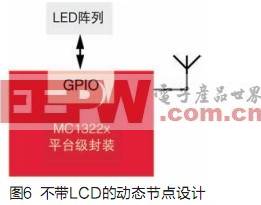
The waypoint node with data logging will also include SPI flash, which can be connected to the onboard MC1322x microcontroller via the SPI interface.
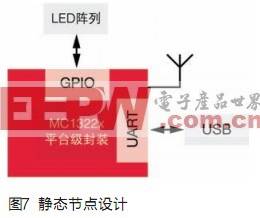
Freescale also offers a fully integrated development environment (IDE) for embedded application development. It also provides the BeeKit® Wireless Connectivity Toolkit for use with the IDE, a suite of development kits that fully includes a wireless network protocol library, application templates, and sample applications.
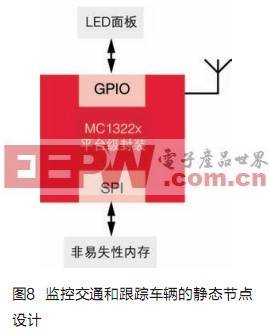
Conclusion
In this article we discuss the importance of an effective driver assistance system and how it can help us improve road safety standards. The solution significantly reduces driver risk and better manages traffic. Compared to other more expensive commercial systems, our ZigBee-based driver assistance system is a cost-effective alternative to expensive commercial systems such as GPS, which provide navigation services but do not have any early warning capabilities.
data record
Each waypoint node at the main intersection and major highway entrances and exits is able to save ID and time information through the vehicle. The node records the vehicle entry and exit time and the dwell time within its range within its listening range. This helps city planners get an overview of traffic patterns and flows.
In a specific location, dozens of waypoint nodes can be connected to a gateway node through a mesh network, which in turn is combined with an administrative office LAN. The gateway node will periodically query the waypoints in each mesh network. The node updates its main log. The main log information can be used to generate a daily or monthly comprehensive report. Local air quality can also be effectively monitored by integrating air quality, temperature and humidity sensors at a single point node. Because these applications require a large amount of data logging, fast, long-lived, non-volatile memory with error correction should be included in the waypoint nodes.
Guangzhou Etmy Technology Co., Ltd. , https://www.gzdigitaltalkie.com
